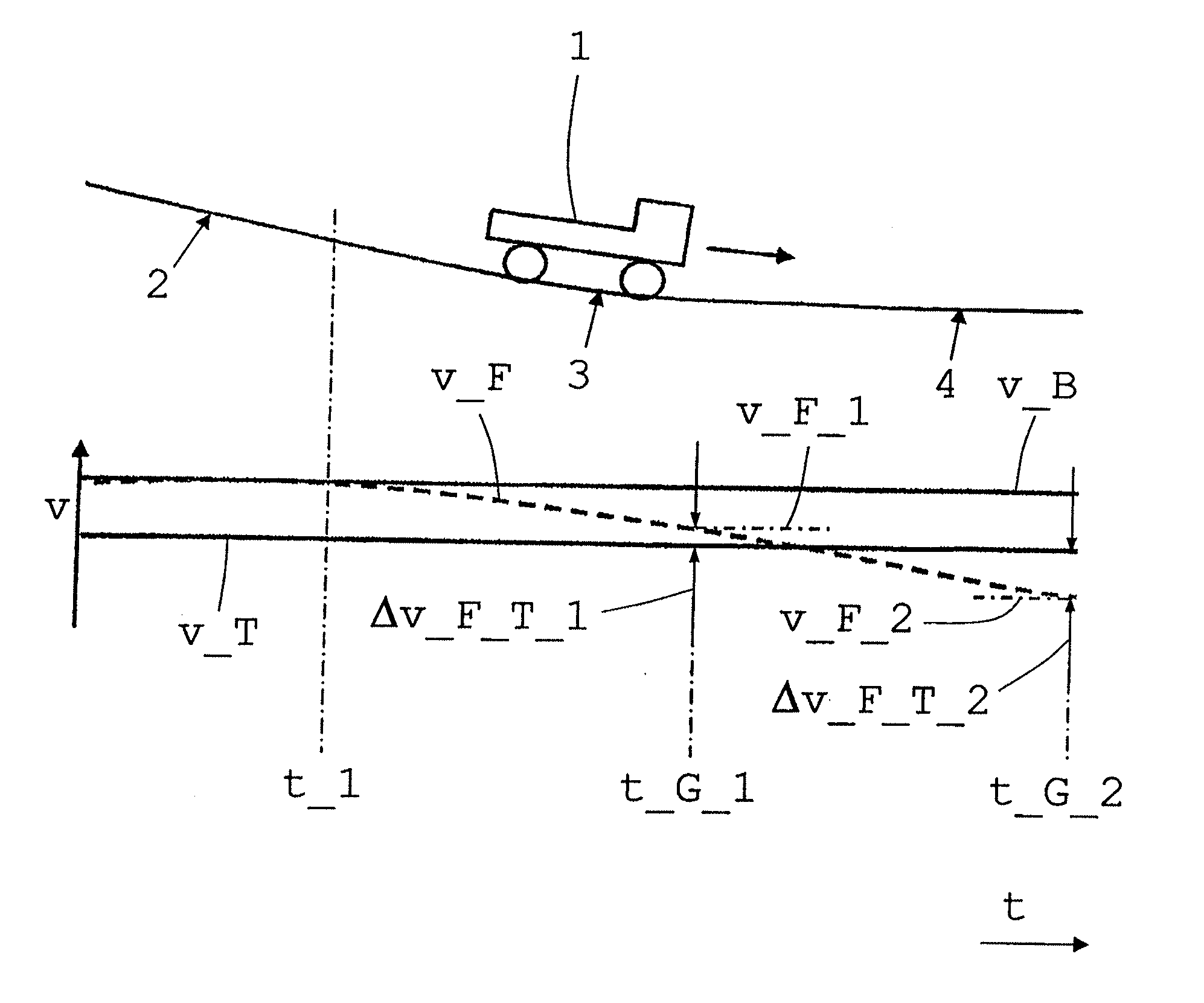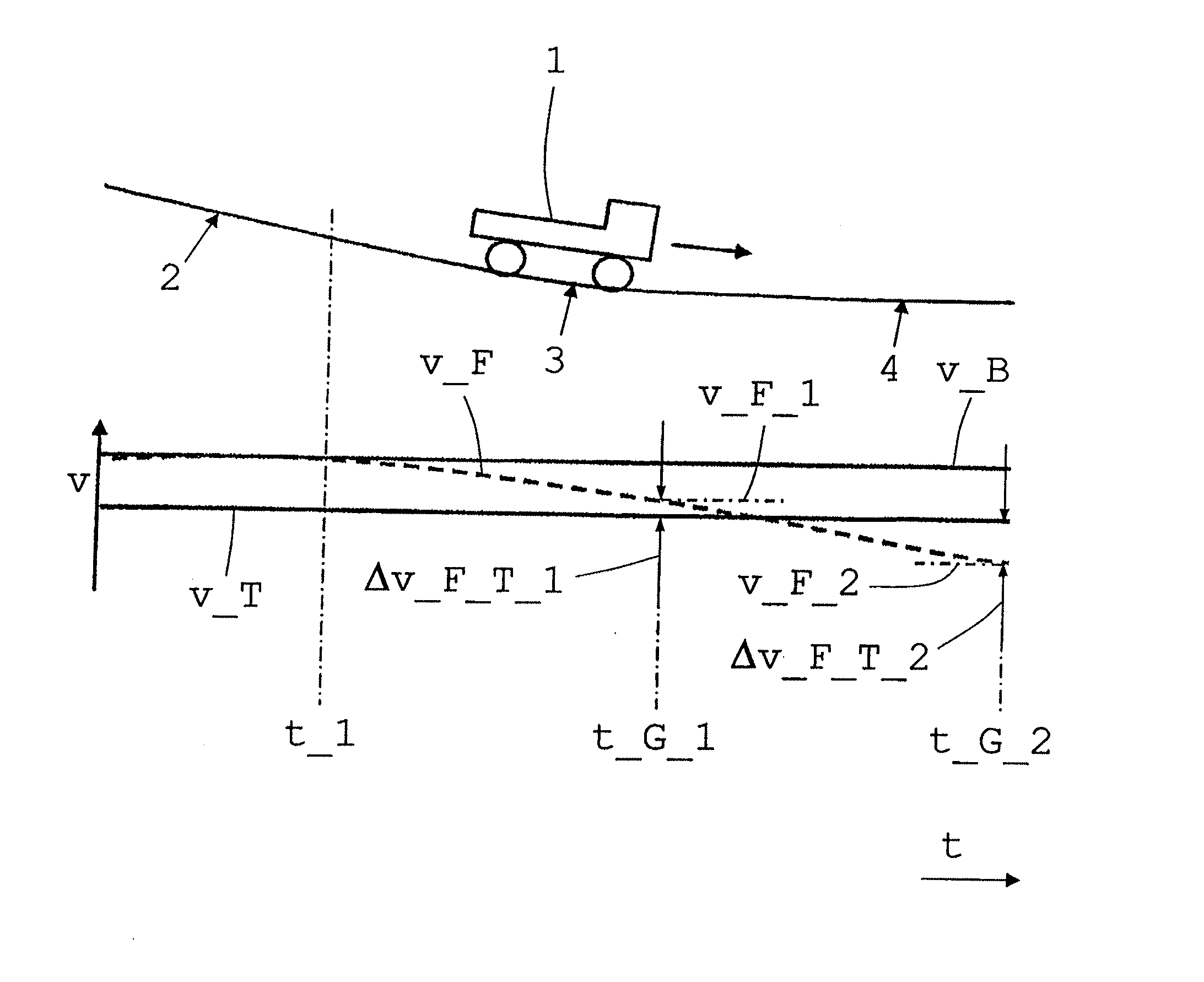Method for controlling a rolling or coasting function of a vehicle
a technology for coasting and vehicles, applied in mechanical devices, road transportation, transportation and packaging, etc., can solve the problems of reducing the efficiency of vehicle coasting, so as to achieve the effect of effective exploitation of the coasting function and saving fuel
- Summary
- Abstract
- Description
- Claims
- Application Information
AI Technical Summary
Benefits of technology
Problems solved by technology
Method used
Image
Examples
Embodiment Construction
[0041]The commercial vehicle possesses a drive train with an internal combustion engine and an automatic or automated single or multi-group transmission that can be controlled by transmission controls. Furthermore, a driving speed control device is provided. Vehicles with such drive trains are known per se; consequently, the following description is restricted to a method according to the invention for controlling a rolling or coasting function of such a vehicle.
[0042]The method is essentially based on the fact that the flow of power in the drive train is restored after a rolling or coasting situation depending on a selectable speed difference Δv_F_T=v_F−v_T between the current vehicle speed v_F and a lower speed limit set by the driving speed control device, that is, a Tempomat speed v_T.
[0043]Accordingly, the commercial vehicle 1 in the single FIGURE of the drawing is on a slight downhill grade 2 with a relatively low negative slope α_Fb that transitions, via a gradient taper 3, i...
PUM
 Login to View More
Login to View More Abstract
Description
Claims
Application Information
 Login to View More
Login to View More - R&D
- Intellectual Property
- Life Sciences
- Materials
- Tech Scout
- Unparalleled Data Quality
- Higher Quality Content
- 60% Fewer Hallucinations
Browse by: Latest US Patents, China's latest patents, Technical Efficacy Thesaurus, Application Domain, Technology Topic, Popular Technical Reports.
© 2025 PatSnap. All rights reserved.Legal|Privacy policy|Modern Slavery Act Transparency Statement|Sitemap|About US| Contact US: help@patsnap.com


